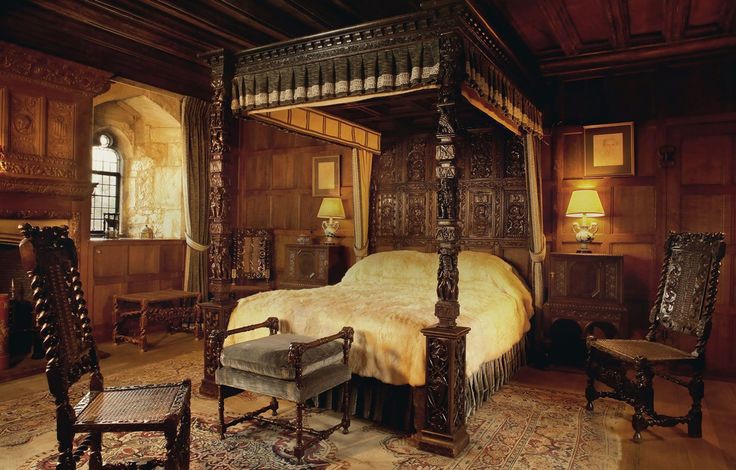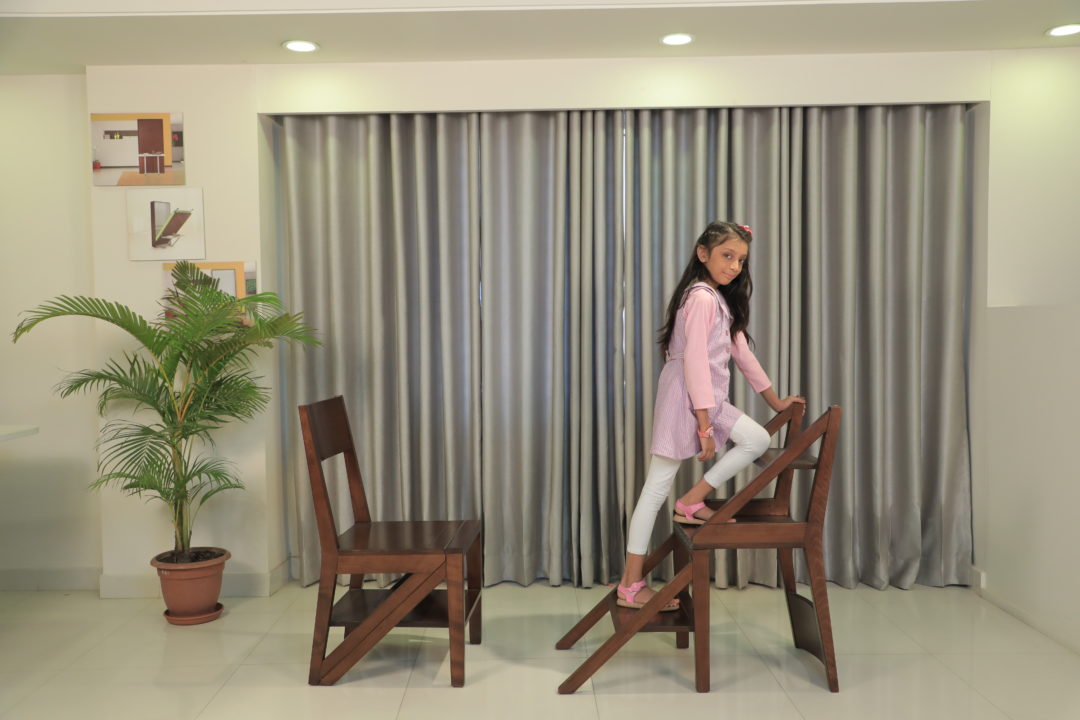Furniture has been a part & parcel of our daily lives for almost 12,000 years now. Within this long timeline, it has gone through revolutionary changes as people of multiple ages and dynasties experimented with various unconventional concepts of furniture, structure, intricate designs etc. Apart from just making people’s lives easier through its functionality, over the years, furniture also became a popular canvas for many historical artisans to express their sheer expertise and a very common place for the admirers of art to splurge their wealth on. So, a focus on both the functionality and aesthetics while creating furniture has always been some of the top priorities.
Even though the basic structure remains the same, more focus is given on how to make the furniture a symbol of comfort & luxury in modern lives. Chairs have become designed as more than just a place to sit, but as a place to relax with items such as recliners and rocking features. Beds are designed to comfort us as we sleep instead of providing the mere basics to keep us from lying upon the ground. Apart from that, materials & stability also became stronger & long-lasting as time passed by. Let’s look at the historical timeline of the evolution of furniture in detail.
The Neolithic Period & The Classical World
 All of the furniture in the Neolithic Period were made of stone
All of the furniture in the Neolithic Period were made of stone
The first documented instances of furniture being used in ancient times was during the Neolithic Period (around 5,500-2,500 B.C) aka the “Stone Age”. Dressers, cupboards and beds were amongst the first forms of furniture which were discovered in Orkney, Scotland. All of those furniture were made of stone as wood was not available in abundance during that historical period.
 In the Classical World Period, Greeks & Romans flourished in the furniture industry
In the Classical World Period, Greeks & Romans flourished in the furniture industry
Going forward in time, we see the ascension of “The Classical World” from the 9th-8th Century B.C. During this timeline, the interlocking civilizations of ancient Rome & Greece flourished and wielded huge influence almost all over Europe, Africa & Asia. In the furniture sector, beds were the most popular. Apart from its common purpose to sleep, it was also used as the resting place of the deceased bodies of Queens & Pharaohs. The level of work of art and intricate detailing on those beds exuded luxury and sophistication. Moreover, chairs and headrests in lieu of pillows were common household furniture for Ancient Egyptians too.
Early Modern Europe & The 19th Century
 Medieval furniture were all about royal artworks and vintage look & feel
Medieval furniture were all about royal artworks and vintage look & feel
Most of the designs & concepts of furniture that were widely available and well-renowned from 500-1500 A.D. were made by the Europeans. This lineup of furniture is called Medieval or Early Modern Europe furniture. Vintage look & feel, ‘king or queen’ size beds and royal artworks were some of their common features and these are still popular concepts in the case of modern household furniture. Back in time, chairs were the most popular because of being made of expensive heavy oak with fantastic artistic designs.
In Bangladesh, regardless of all the dynasties and European countries that have ruled during that time period, big beds carved with rich motifs and crafted by the best artisan and craftsman of the country, known as “palang” were the all time favourite. These expensive yet top quality furniture were mostly installed in the houses of the kings, Nawabs and the colonials residing in these lands in order to showcase their aesthetic and premium taste to their “subjects”.
 Gothic furniture became a worldwide trend in the 19th century
Gothic furniture became a worldwide trend in the 19th century
In the 19th century, gothic styles on furniture became a worldwide trend. They had fancy cut-out designs alongside detailed work of art. But, since the prices increased with the rate of detailed work of art, designed furniture was mainly used by the wealthy ones in that period. Apart from the gothic style, archaeological and ornate furniture designs were popular among common people too. All in all, diversity was the norm in furniture design during that period of time unlike any other centuries.
But, when it came to our country, the scene was a bit different. As the increase in population was at an all time high after the Liberation War, the majority of the families in towns were extended families. To accommodate all of the members, huge, bulky furniture made of top quality wood was the ultimate choice. In the 90s, in order to embrace their aestheticism, people started to look for big furniture with motifs, minimal artworks of fruits, flowers and abstract designs. Alongside that, storage with the beds was a very wanted feature among the mass consumers too which reflects their trait to look for all in one.
Early North American & Modernism
 Simplicity & exquisite quality were the main focus in the Early North American furniture
Simplicity & exquisite quality were the main focus in the Early North American furniture
In the 20th Century, Early North American furniture became widely popular around the world because of their simplicity. If we look back, luxurious and intricate designs were the main focus in the past. But, during this period of time, through Early North American Furniture, people took interest in furniture that were more basic and just fulfilled their necessity than fancy artistic ones. So, a revolution occurred in the furniture sector altering the taste of furniture of the common people. Since designs were not anymore the priority, furniture became more accessible to the mass consumers of versatile socio-economic backgrounds. Some of the popular Early North American furniture are basic dressers for storage, simple chairs and stools. They were made of cost-efficient cherry or walnut woods instead of expensive mahogany or oak trees.
 Simple & sleek furniture were the way to go during the modernism period
Simple & sleek furniture were the way to go during the modernism period
As time passed by, catastrophic events started to take place one after another. Apart from large-scale casualties, people were suffering to an unbearable level in all fields. So, their consumption behaviour changed drastically. Post World War II is considered as the period of modernism. During this tough timeline, simple and sleek furniture designs were widely popular. Many famous furniture designers flourished during this period such as- Marcel Breuer (Germany), Eileen Gray (France), Isamu Noguchi (Japan) etc. Chairs or stools representing basic seating needs became the hottest selling furniture product back then.
Eco-design & Contemporary
 Eco Design furniture were the centre of focus for all the health conscious people
Eco Design furniture were the centre of focus for all the health conscious people
The rise of eco-design can be traced back to the 1960s when people gradually started to understand the repercussions of making furniture cutting off wood in bulk from multiple forests. The popularity started from America in the 1920s but it fully blossomed worldwide in the 1960s. Eco-design furniture is made of quickly growable and replaceable materials such as bamboo. Simple coffee tables and kitchen tables are some of the popular examples of Eco Design furniture.
 Any modern furniture created from 1970s onwards are called contemporary furniture
Any modern furniture created from 1970s onwards are called contemporary furniture
Any modern or recent furniture (from 1970s onwards) is regarded as contemporary furniture in today’s market. SmartFit furniture has become a popular name among contemporary furniture recently, especially in Bangladesh. It is because they are sleek, modern looking and easy to accommodate in a house with small space. Alongside that, pop of bright colours on furniture has been a favourable choice of the modern generation too. That’s why orange sofas, minimalist beds with rainbow sheets etc. are some common furniture in households. From only preferring bulky furniture made of wood and not worth renovating after a few years to choosing sleek, multipurpose furniture valuing utility over luxury, a drastic change in the consumer behaviour of Bangladeshi citizens occurred as time passed by and the furniture industry is one of its ultimate testament.
All these drastic changes in the shapes, structures and design of furniture delineate the evolution of our society from mere survival to lives of luxury & privilege. In the end, we all have unique tastes when it comes to choosing furniture and so, the evolution will continue till the human race exists.




